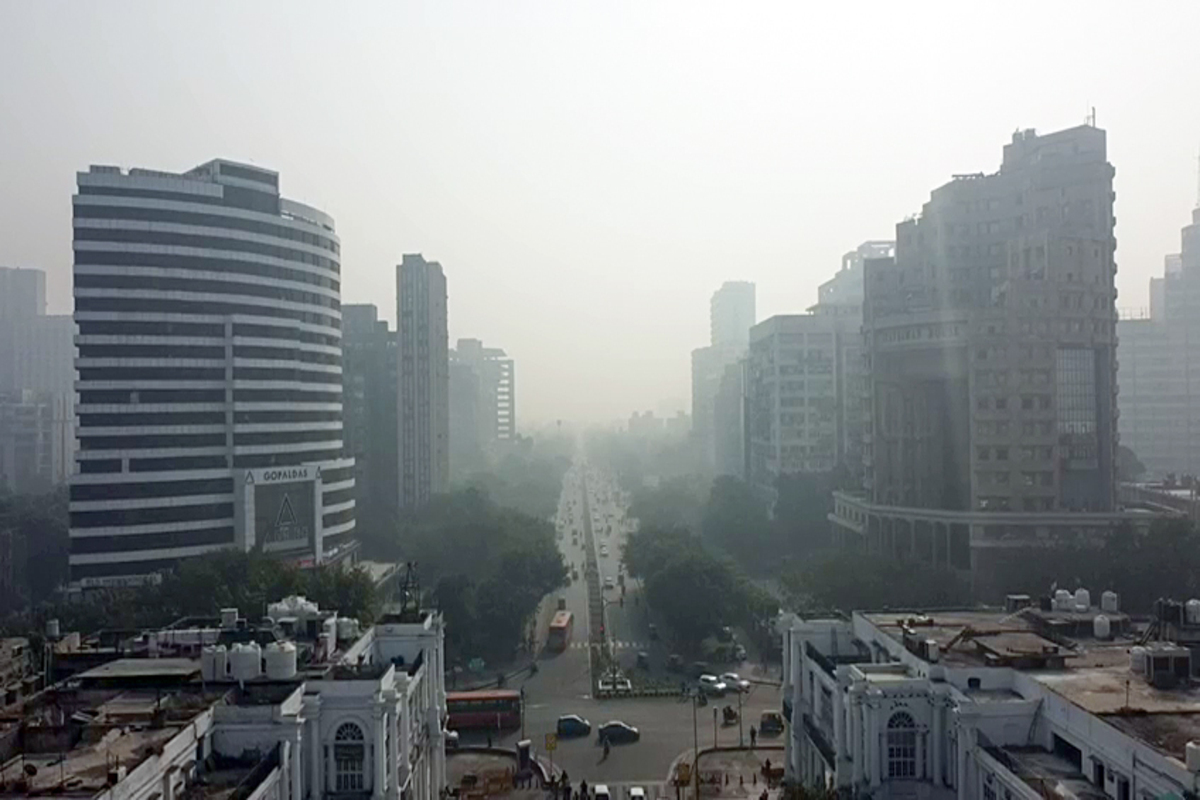Critical Minerals Summit in Delhi from Monday
The Ministry of Mines will hold a Critical Minerals Summit from April 29 to April 30 at the India Habitat Centre in Lodhi Estate, New Delhi, the ministry said in a press note on Sunday.
As per the data from the CPCB recorded at 6:00 am on Thursday morning, the Air quality index at Anand Vihar was at 387 (very poor); At ITO, Delhi it was 343 (very poor) while the AQI at Wazirpur, Delhi, was 422 (severe), at RK Puram, it was 415 ( severe).

A drone visual shows the Connaught Place area covered in smog as the air quality in the national capital (ANI Photo)
The National Capital continued to experience ‘very poor’ air quality on Thursday morning, with an air quality index (AQI) of 324, as per the System of Air Quality and Weather Forecasting And Research (SAFAR-India).
As per the data from the CPCB recorded at 6:00 am on Thursday morning, the Air quality index at Anand Vihar was at 387 (very poor); At ITO, Delhi it was 343 (very poor) while the AQI at Wazirpur, Delhi, was 422 (severe), at RK Puram, it was 415 ( severe).
Similarly, the Air Quality Index recorded at 7:00 a.m. on Thursday morning at Okhla Phase-2, Delhi, was 406 (severe).
Advertisement
The Air Quality Index from 0 to 100 is considered as good, while from 100 to 200 it is moderate, from 200 to 300 it is poor, and from 300 to 400 it is said to be very poor and from 400 to 500 or above it is considered as severe.
The Air Quality Index is a tool for effectively communicating air quality status to people in terms that are easy to understand. It transforms complex air quality data of various pollutants into a single number (index value), nomenclature and colour.
With an improvement in the air quality in Delhi last week, the CAQM (Commission for Air Quality Management) on Saturday revoked the restrictions that were imposed under GRAP 4, permitting trucks and buses except for BS-3 and BS-4 petrol and diesel vehicles to enter the city and lifting the ban on ongoing construction activities.
The Supreme Court suggested on Tuesday that the farmers who engage in stubble burning be deprived of the Minimum Support Price (MSP) benefits as a part of the economic repercussions of their actions.
The Top Court was hearing a plea pertaining to rising air pollution in Delhi-NCR.
Advertisement